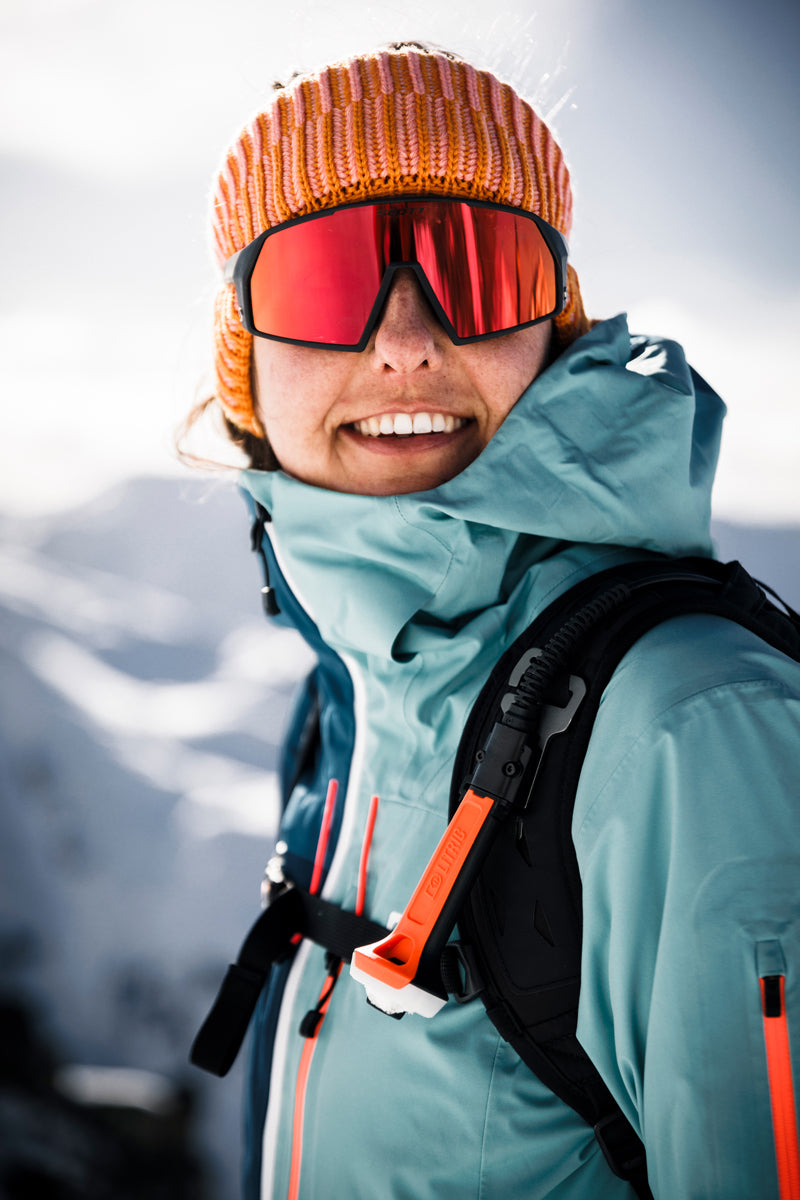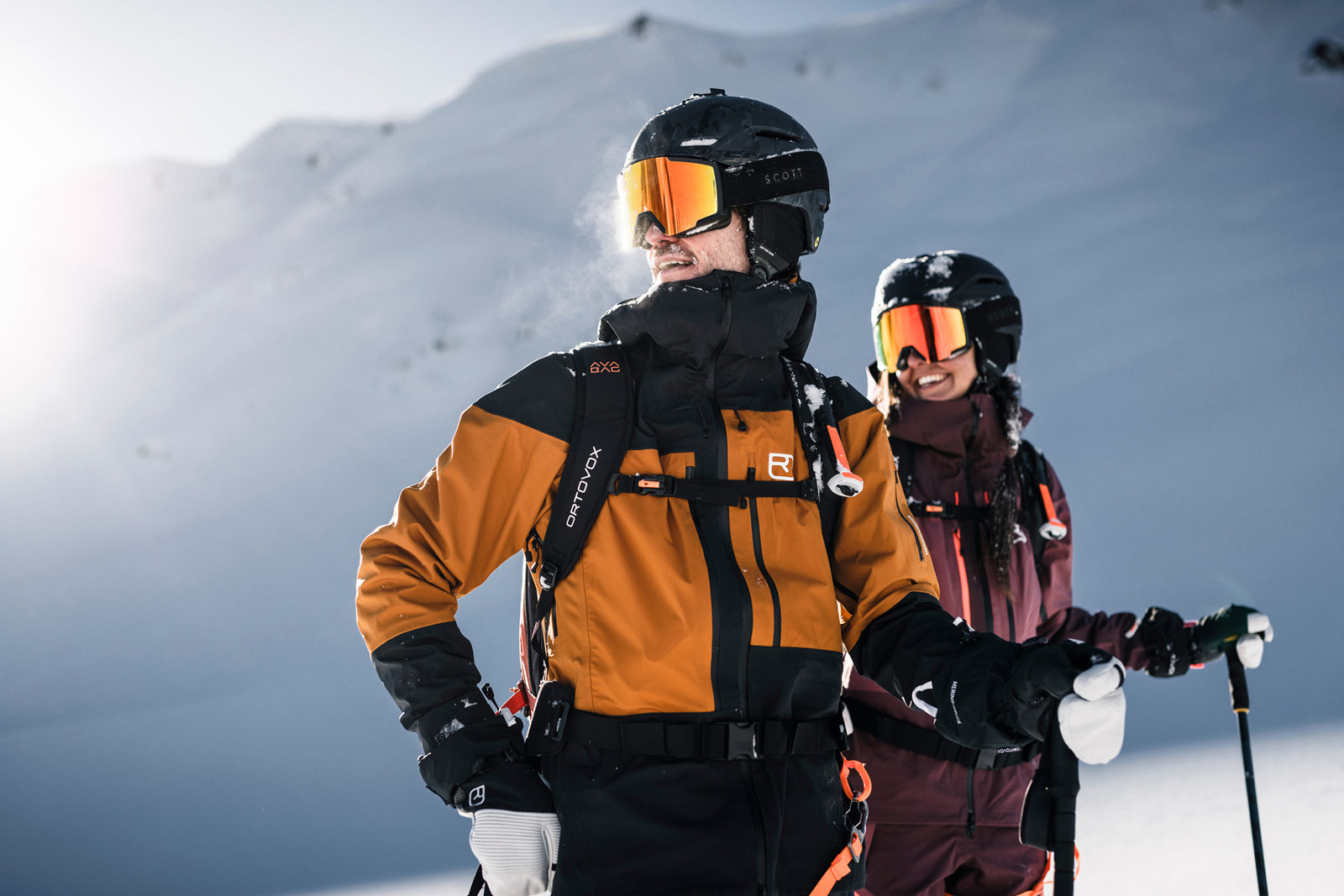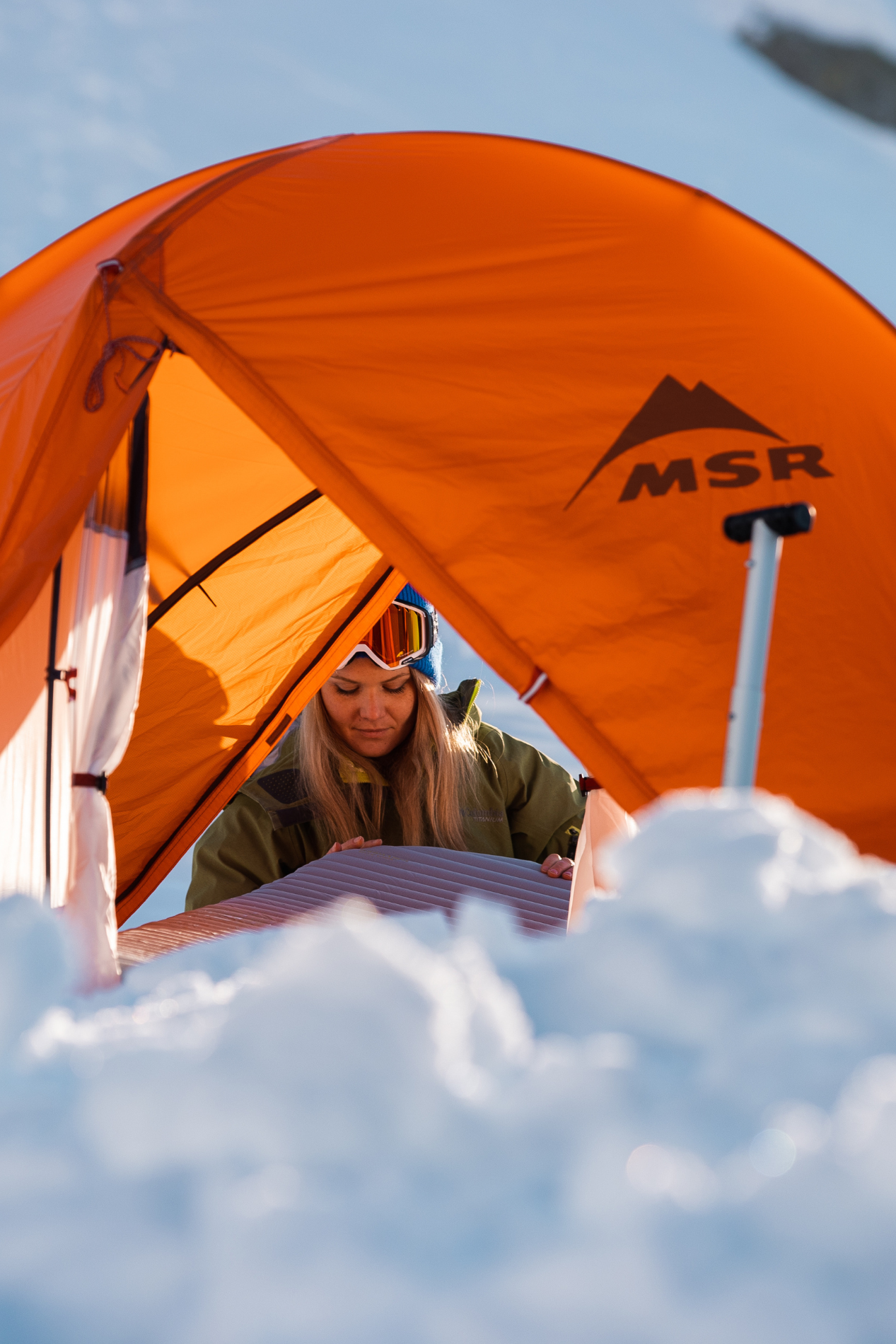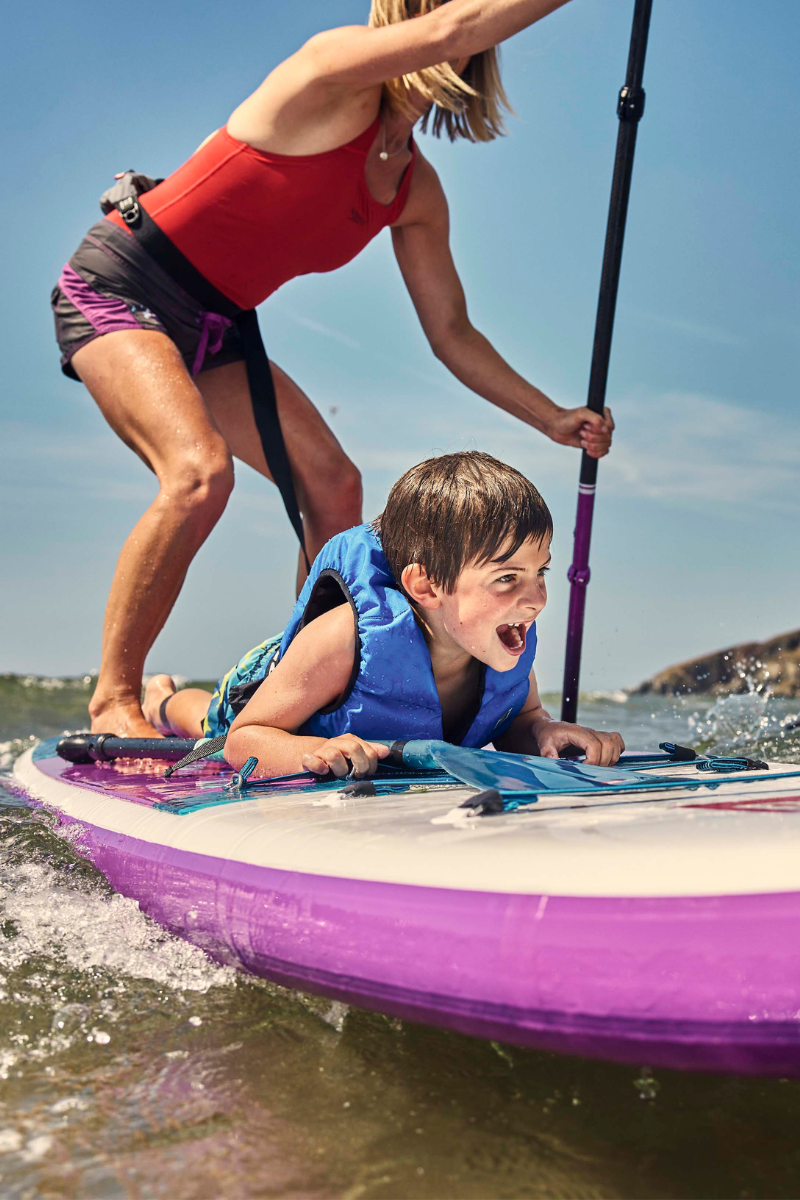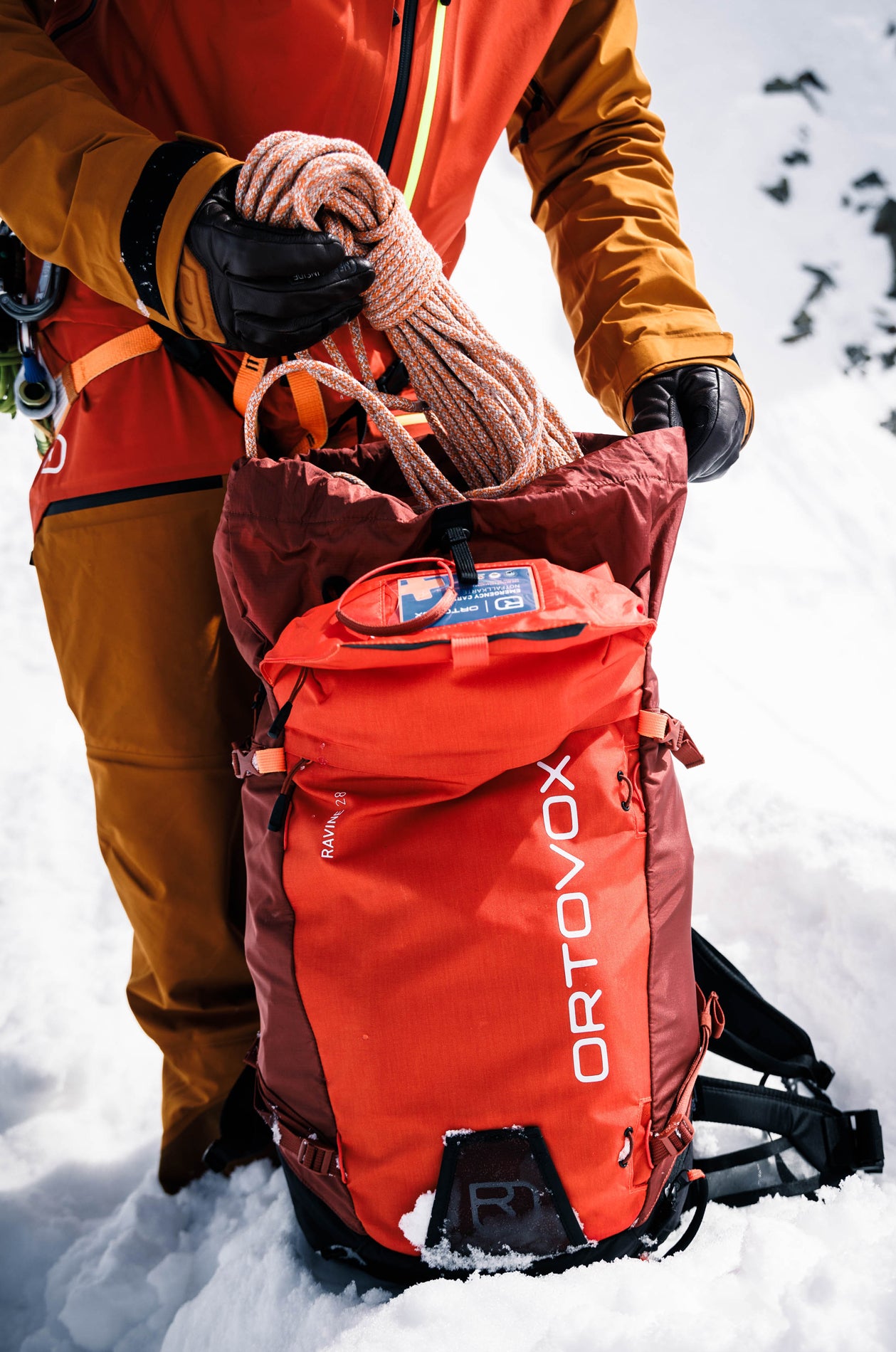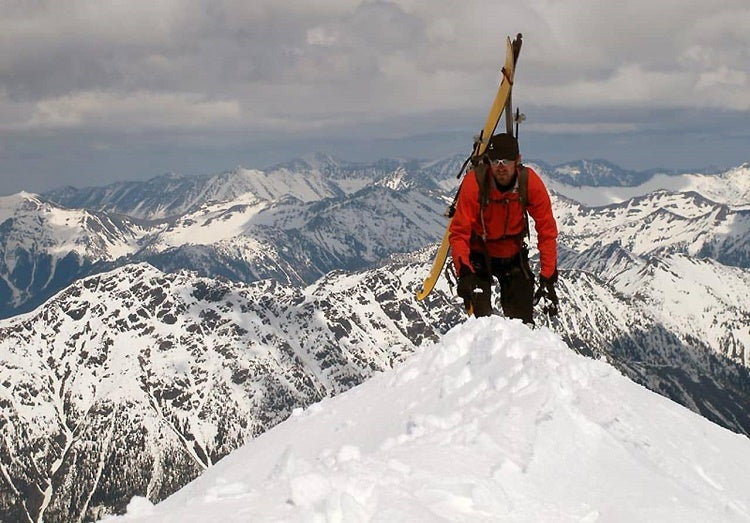Words and photos by Vince Shuley

Traditional mountaineering axes (left), curved shaft and vertical ice climbing axe (right)
The Ice Axe
The mountaineering axe (commonly referred to as an ice axe) is not swung as much as it’s used as an extra point of balance. Or in some cases, used for fall arrest. By plunging the shaft into the snow it can be used as an effective handhold when climbing. When the terrain steepens significantly, the climber can swing the axe for the pick to penetrate ice and gain purchase on steep slopes. The adze on the back of the axe head can also be used for digging platforms or holes in hard snow. The use of an ice axe goes well beyond climbing. You can use it to peg down a tent, build a belay anchor or even complement your shovel when digging a snow cave.
The most common ice axe – and the one that most skiers need – has a straight shaft. The Black Diamond Raven Pro and Camp Corsa are both light, strong and affordable. If looking to spend more time on vertical terrain, then a slightly curved shaft of an ice axe will give better purchase when hacking into steeper slopes. Examples are the Camp Corsa Nanotech or Alpina models. The curved portion of the shaft is near the head so the axe can still plunge, but not as comfortably as a traditional straight-shaft mountaineering axe.

Metal heel and toe clips on the Black Diamond Sabretooth boot crampon
Boot Crampons
A sturdy pair of boot crampons should go hand-in-hand with the purchase of an ice axe. A design that has changed little over the last century, the classic Grivel 10-point crampon has been copied and modified by dozens of brands and is a fixture of modern ski mountaineering gear.
There is a few variations on boot crampon models that you should consider. If you plan on climbing up steep and technical ascents then choose a crampon with moderately aggressive front teeth such as the Black Diamond Sabretooth or new Snaggletooth. If you want the crampons to double for summer glacier walking then opt for the less aggressive front teeth to keep the long treks more comfortable.
Another consideration of boot crampons is the binding system. Ice climbers and mountaineers will mostly choose the metal toe and heel clip system for a more secure attachment to technical boots. The strap system relies on tension of the straps to keep the crampons on your boots, but can fit can also fit a hiking boot for non-ski activities.

Ski crampon attached to a Dynafit Speed Radical binding
Ski Crampons
An often overlooked piece of equipment, ski crampons attach to touring bindings to provide purchase when skinning on steep and icy slopes. They make sidehilling and touring on crust a breeze with the security of metal teeth digging into the hard snow surface. Unlike boot crampons however, ski crampons are manufactured for specific brands of bindings and only come in fixed widths. That means if you want to use ski crampons on a fatter pair of skis, you’ll need to buy a second set.
Harness, Rope and Helmet
One of the biggest dangers of glacier travel are crevasse hazards. When touring on glaciers early or late season (i.e. when snow bridges aren’t solid) then every member of the party should be wearing a harness. With a minimum 30 metres of rope other party members can rescue their fallen comrade out of the crevasse. Harnesses are also essential for rappelling into couloirs (with a belay device) or belaying friends on exposed sections of the climb or descent. Helmets are optional, but a good idea if you’re going into terrain with a high consequence of falling such as tight couloir.
Learning to use all this ski mountaineering gear in the backcountry requires training, so if you’re interested in learning more about ski mountaineering techniques or crevasse rescue, visit our friends at Mountain Skills Academy & Adventures. Check out the above gear at either our Whistler or Squamish stores.


